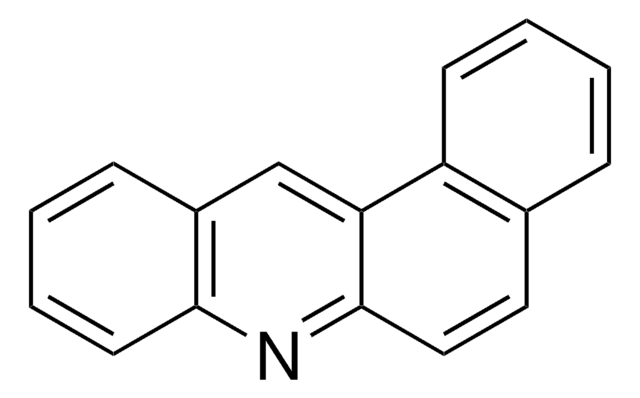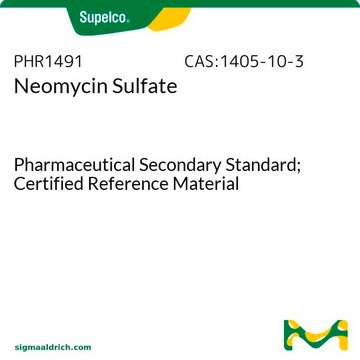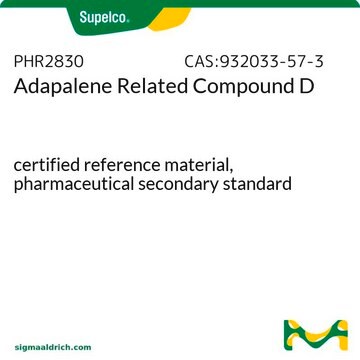모든 사진(1)
About This Item
실험식(Hill 표기법):
C15H22ClNO2
CAS Number:
Molecular Weight:
283.79
Beilstein:
8396147
EC Number:
MDL number:
UNSPSC 코드:
41116107
PubChem Substance ID:
NACRES:
NA.24
추천 제품
Grade
analytical standard
Quality Level
제품 라인
PESTANAL®
유통기한
limited shelf life, expiry date on the label
농도
100 μg/mL in acetonitrile
기술
HPLC: suitable
gas chromatography (GC): suitable
응용 분야
agriculture
environmental
형식
single component solution
저장 온도
2-8°C
SMILES string
CCc1cccc(C)c1N(C(C)COC)C(=O)CCl
InChI
1S/C15H22ClNO2/c1-5-13-8-6-7-11(2)15(13)17(14(18)9-16)12(3)10-19-4/h6-8,12H,5,9-10H2,1-4H3
InChI key
WVQBLGZPHOPPFO-UHFFFAOYSA-N
관련 카테고리
애플리케이션
Refer to the product′s Certificate of Analysis for more information on a suitable instrument technique. Contact Technical Service for further support.
법적 정보
PESTANAL is a registered trademark of Merck KGaA, Darmstadt, Germany
신호어
Danger
유해 및 위험 성명서
Hazard Classifications
Acute Tox. 4 Dermal - Acute Tox. 4 Inhalation - Acute Tox. 4 Oral - Eye Irrit. 2 - Flam. Liq. 2
Storage Class Code
3 - Flammable liquids
WGK
WGK 2
Flash Point (°F)
35.6 °F - closed cup
Flash Point (°C)
2 °C - closed cup
개인 보호 장비
Eyeshields, Faceshields, Gloves, type ABEK (EN14387) respirator filter
Choose from one of the most recent versions:
M T Moore et al.
Bulletin of environmental contamination and toxicology, 89(2), 292-295 (2012-06-02)
Phytotoxicity assessments were performed to compare responses of Typha latifolia (L.) seeds to atrazine (only) and atrazine + S-metolachlor exposure concentrations of 0.03, 0.3, 3, and 30 mg L(-1), as well as permethrin exposure concentrations of 0.008, 0.08, 0.8, and
Zisis Vryzas et al.
Chemosphere, 89(11), 1330-1338 (2012-06-29)
Biotransformation studies of atrazine, metolachlor and evolution of their metabolites were carried out in soils and subsoils of Northern Greece. Trace atrazine, its metabolites and metolachlor residues were detected in field soil samples 1 year after their application. The biotransformation
J Restivo et al.
Journal of hazardous materials, 239-240, 249-256 (2012-09-27)
The catalytic ozonation of the herbicide metolachlor (MTLC) was tested using carbon nanomaterials as catalysts. Multiwalled carbon nanotubes were used in semi-batch experiments and carbon nanofibres grown on a honeycomb cordierite monolith were tested in continuous experiments. The application of
Sean Hartnett et al.
Chemosphere, 90(3), 1258-1266 (2012-10-23)
Metolachlor is one of the most commonly used herbicides in the United States. Protein synthesis is inhibited when roots and shoots of susceptible plants absorb this synthetic herbicide. While quite effective in killing weeds, several studies have shown that exposure
Rakesh K Ghosh et al.
Journal of environmental science and health. Part. B, Pesticides, food contaminants, and agricultural wastes, 47(7), 718-727 (2012-05-09)
Adsorption of metolachlor and atrazine was studied in the fly ash (Inderprastha and Badarpur)- amended Inceptisol and Alfisol soils using batch method. Results indicated that sorption of both the herbicides in soil+fly ash mixtures was highly nonlinear and sorption decreased
자사의 과학자팀은 생명 과학, 재료 과학, 화학 합성, 크로마토그래피, 분석 및 기타 많은 영역을 포함한 모든 과학 분야에 경험이 있습니다..
고객지원팀으로 연락바랍니다.




![Dibenz[a,h]acridine BCR®, certified reference material](/deepweb/assets/sigmaaldrich/product/structures/383/751/70b25872-405f-49b1-b76b-ed5e018ce265/640/70b25872-405f-49b1-b76b-ed5e018ce265.png)





